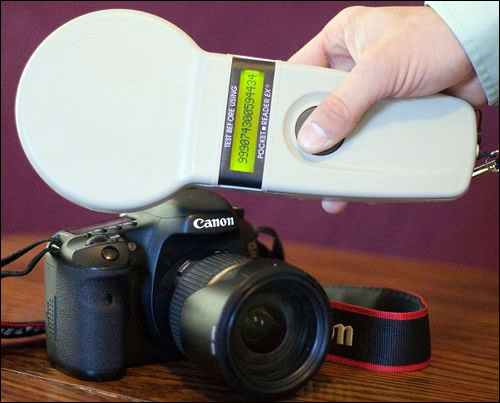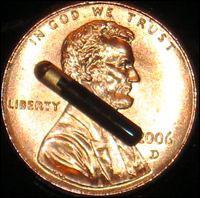Two years ago, Ron Wolff sought to formulate a solution that could help identify lost or stolen goods, based on technology with which his dog, Ticky, was all too familiar. Ticky, like many pets, had an embedded 134 kHz low-frequency (LF) passive RFID chip with a unique ID number that could help veterinarians or animal-control officers equipped with handheld readers to locate his owner in the event that the dog became lost. Wolff—who operates Lake Shore Cleaners, a landscaping business in Appleton, Wis.—realized that the technology could be used not only to track pets, but also items, especially valuable objects that often end up missing, such as guitars or construction-site tools.
Wolff set out to learn more about radio frequency identification. His search led him to a company already providing such technology: Snagg, a Palo Alto, Calif., firm founded by a musician who employed RFID to help identify stolen guitars (see RFID and the Arts). Wolff acquired the company, moved its headquarters to Appleton, and began offering the microchips to the mass market.

At its own online store, as well as through various retail partners, Snagg now offers an installation kit for $24.95. The kits consist of a microchip, installation instructions, epoxy glue (to hold the chip in place), a drill bit (in case drilling an item becomes necessary), and a set of stickers indicating the presence of RFID technology, if desired. According to Brian Schuh, the company’s chief information officer, the company also sells microchips, in large or small volumes, to product manufacturers, distributors and end users.
The cylindrically shaped chips, measuring approximately a half inch in length and a 16th of inch in diameter, are designed to be attached to a variety of objects, such as on a contractor’s tools, a gun collector’s firearms or golf carts, in order to help identify any lost items that are recovered. The microchips are custom-made for Snagg by a third-party manufacturer located in India. In addition, Snagg sells a handheld interrogator known as the Pocket Reader, also manufactured for the company by a third party , that can be plugged into a PC or laptop. About a dozen companies, mostly located in Wisconsin and Minnesota, sell Snagg’s RFID products, including Joe’s Power Center, a lawn, garden and power-equipment business in nearby Kimberly.
Snagg’s customers include Carvin Guitars, which embeds the chips within all of its instruments at the time of manufacture; Category Five Surfboards, which embeds them within the fiberglass of its boards; and multiple bicycle shops that offer to install the chips within the bikes for a fee. Carvin Guitars also sells Snagg retrofit kits to its own customers, who may opt to add tags to the instruments they already own.
When someone buys an item containing an embedded Snagg chip, has the chip installed on an object, or embeds the chip himself via a Snagg retrofit kit, that person can register the object by accessing Snagg’s server via the Internet, setting up an account and entering the chip’s ID number. He would also provide information about the tagged item, such as its make, model and serial number, as well as his own information as property owner.
If the item is stolen or missing, the user can report the theft to police officers, then contact Snagg and provide the incident number provided by the police. Snagg’s staff can then contact the investigating officer and share the data stored on file for that specific chip ID. The make, model and serial number are often sufficient to identify a piece of stolen property recovered by police or found at a pawnshop or other business. However, Schuh says, if the serial number is destroyed, “the chip is the last line of defense.” The chip, he explains, “offers unalterable proof of ownership.”
If police suspect that there may be a chip in the product (Snagg provides users with a sticker that includes RFID information and Snagg’s logo) the officers can contact the company, which will either direct them to the nearest location to acquire an LF RFID reader, or ship one to them. However, Schuh notes, most animal-control officers carry an LF reader that could be used to interrogate the Snagg tag, and police could utilize that device.
To date, Snagg reports, approximately 35 percent of the items containing a Snagg RFID chip that were stolen have been recovered with the aid of the chip. In 2009, the technology was even used to help solve a homicide case; individuals who robbed and killed their victim brought two of the deceased’s guitars to a Carvin store in an attempt to sell them. The instruments had Snagg chips embedded in them, which police later read via handheld readers in order to identify the property as belonging to the homicide victim. That information led to the two suspects’ arrest.
In the future, Schuh says, Snagg intends to offer a GPS tracking device, about the size of a box of Tic Tac mints, that can be installed in an item to track its location. That device, he adds, would be offered in conjunction with the RFID chip.



